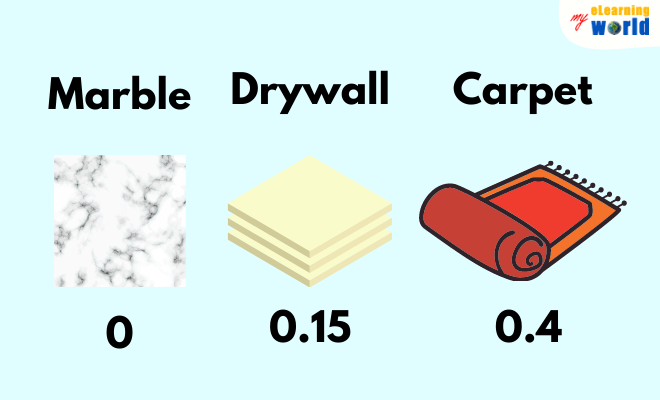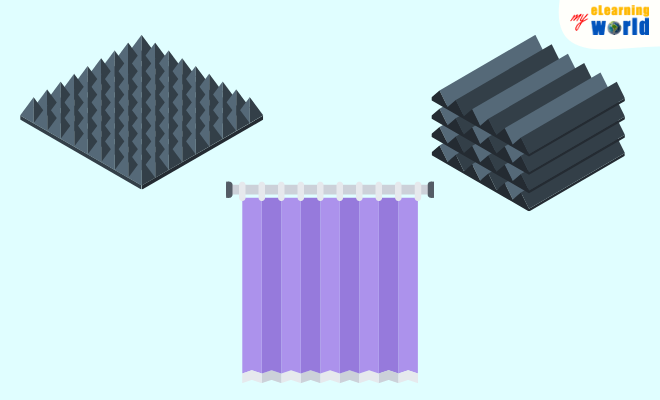During the months that I spent setting up my home recording studio, I came across terms such as STC and NRC that others threw around. I wanted to take a few minutes to explain those terms to you and teach you what you need to know as you work on your studio.
Knowing what materials to use and how to get the most out of your studio will help you save both money and time as well as avoid a disaster. In this article, I hope that you’ll learn the basics of STC vs NRC and take away some key points:
- The basics of STC and NRC along with what they mean
- The materials that you’ll need in your studio
- How to calculate an NRC rating
- How to understand the STC rating chart
Sound Transmission Class
STC is an abbreviation for the term Sound Transmission Class and refers to a specific class of materials.
What Is STC?
You will often hear experts mention both STC and Sound Transmission Class, which refer to the same thing. This is a rating given to a material that tells you how well it will keep sound in or out.
Though STC often refers to the materials used in commercial construction, it can also refer to the products and materials that you use in your home or studio. It essentially tells you how well materials will soundproof a room.
Terms: Decibels, Transmission Loss and Frequency
Decibel: Decibel is the term used to describe the strength of a signal. It often refers to how loud an electronic item is such as a microphone.
Transmission Loss: The term transmission loss refers to the decrease or loss of the signal’s strength. You’ll often find this term used to describe audio equipment.
Frequency: Frequency tells you how many times an event will repeat over a specific period of time. It goes along directly with STC.
How Is STC Measured?
To measure or calculate STC, you will find the transmission loss values and compare those to the frequency range. This will form a curve that shows you how well the materials work when used at different frequency levels.
Where Is STC Useful? When Is High STC Good and Not?
In my experience, a high STC rating is far better than a lower one. This shows that your studio is soundproof and that you don’t need to worry about sounds getting inside or going outside.
Let’s say that you want to host a podcast from your home studio. A low Sound Transmission Class rating means that your microphone may pick up noises from around you or allow the sound of your voice to reach your neighbors. With a higher rating, you get the soundproofing and security that you want.
STC Rating Chart
I created a simple STC rating chart that shows the figures given to different products on a scale of 25 to more than 60.
- Single-Pane Windows – 25
- Standard Interior Doors – 30+
- Hollow Interior Doors – 45
- Damping Compounds – 50
- Concrete Floors – 50
- Masonry Walls – 60
Keep in mind that traditional building and construction supplies have a lower STC as the manufacturers expect you to use those materials in ordinary ways. They do not create those products as soundproofing supplies.
For example, single-pane windows have a low rating that shows you they may keep the sounds of normal conversations from getting outside. Concrete floors and walls have a higher rating that means your neighbors will hear fewer of the things that you do.
Soundproofing materials have a higher rating. You can use a single product or a combination of materials such as panels and curtains to build the perfect home studio.
Materials for High STC Rating
There are many products that have a high STC rating and can make your home studio more soundproof. The most common example is drywall as different types and sizes can damper and block higher sounds.
You may want to invest in damping compounds that you can apply to your existing walls. I found that products such as Green Glue work quite well and are easy to use.
I also recommend looking into acoustic foam and panels. You can check out this article to see how the rating also relates to home windows as your studio may have one or more windows.
Noise Reduction Coefficient
Though STC is a class of materials, Noise Reduction Coefficient is a rating that applies to the absorption of those materials.
What Is the NRC and NRC Rating?
As you look at STC vs NRC, you’ll quickly see that the two terms are similar but also different. The NRC rating tells you how well materials will absorb noises and sounds in a specific frequency range.
How to Calculate NRC?
I highly recommend looking over this article to get an idea of how brands calculate this rating. The manufacturer will first use a test process to determine the absorption level in a standard room.
The company will then place an acoustic material in the room and perform a second round of tests. Once they subtract the two figures, they get the NRC rating. You can perform the same tests in your home studio.
Where Is NRC Useful? Is a Higher or Lower NRC Better?
NRC is useful in home studios because it gives you a good idea of what your listeners will hear. If you have a low rating, your listeners may hear everything from the dog next door barking to traffic on the street. Those noises can turn them off and make them avoid your recordings.
You’ll find this rating listed between zero and one. A rating that is closer to one such as .9 tells you that the product absorbs almost no sounds. If you have a rating closer to zero such as .1, you’ll know that the product absorbs more noises and that you don’t need to worry about picking up ambient sounds.
Let’s say that you want to build a vocal booth for voiceover work. You want a lower rating that ensures no sounds from your studio escape outside. In this article about vocal booths, you can pick up tips on designing one.
Noise Reduction Coefficient Chart
Check out the following chart to see the ratings given to specific materials.
- Marble – 0
- Drywall – 0.15
- Carpet – 0.4
- Ceiling Tiles – 0.7
- Acoustic Panels – 1
I strongly encourage you to think about the materials that you already have in your home as you look over this chart. That will help you determine the sound absorption that your studio already has and what materials can increase your rating.
Products and Materials for NRC
Acoustic foam panels are just one of the products that you can use to increase the NRC of a home studio. You can click here to find out more about the top acoustic panels that you can use, too.
If you want to block noises and have windows in your studio, I recommend trying soundproofing curtains. They are just as easy to install as traditional curtains are but block street noise from getting inside. They also absorb more of the sounds that you produce.
For curtains that perform both tasks, I suggest looking for those with a vinyl lining on the back. This lining absorbs noises from your studio.
Sound Absorption Average
Sound Absorption Average or SAA is another rating that you need to know. This is a number awarded to a product by the American Society for Testing and Materials (ASTM) that shows its coefficient in a frequency range of 200 to 250 Hz.
Though similar to NRC, SAA refers to a lower frequency range. You may need to look at all three figures when turning a home studio into a professional studio.
STC vs NRC
If you’re a visual learner and still have questions about STC vs NRC, give this short YouTube video a watch. I like that it goes over the differences in around three minutes.
The most important thing to keep in mind is that STC is a rating given to specific products to explain how well the product keeps sounds from escaping from a given room. On the other hand, the NRC tells you how well a product absorbs the same sounds.
Useful Resources
- Sound isolation – 10 tips to improve the STC of walls
- How to soundproof a door
- Soundproofing a window from traffic noise in 4 simple steps
- What are sound waves?
Conclusion
Building a brand new studio in your home is easier than you might think and lets you create a space for recording audiobooks and podcasts along with records and videos. Depending on how busy your home is and the noises you hear, you may want to invest in some soundproofing materials. In this article, you can get a look at the best acoustic blankets on the market. I hope that you found my article on STC vs NRC helpful as you look at which products to add to your studio.














